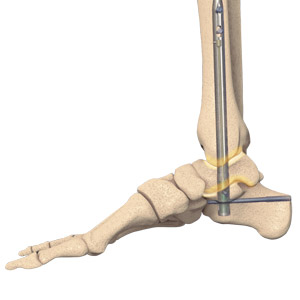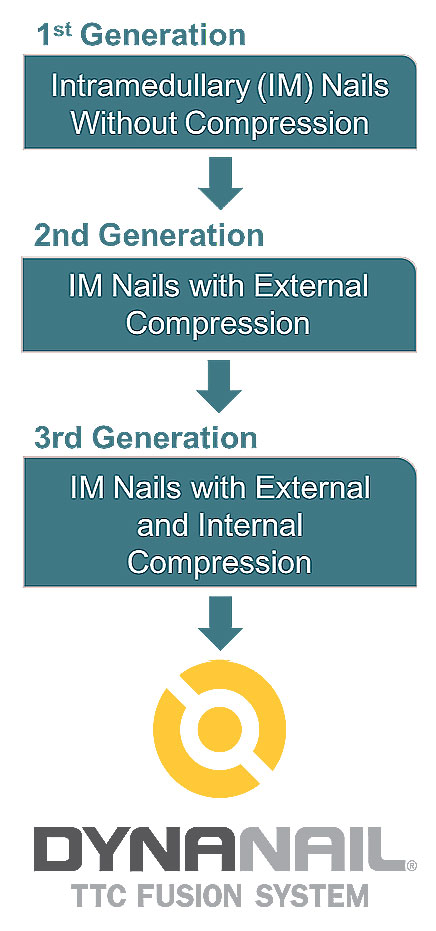The Evolution of Intramedullary Nails for Hindfoot Fusion

Hindfoot fusion nails have evolved in conjunction with the increasing knowledge of factors that lead to successful fusion. This evolution is driven by the need for a simple and robust application of compression across the joints and exemplified by several generations of intramedullary nails in clinical use.
Hindfoot Fusion Nails
Early 1st generation hindfoot fusion nails offered no means of applying compression but rather served to statically lock the nail into the bone with screws.
2nd generation nails allow for external manual compression to be applied using compression rods through the frame. Studies have shown that this form of intramedullary nail fixation results in loss of compression upon removal of installation frame.1
Internal compression was introduced with 3rd generation IM nails, using an internal screw to press against a talar or calcaneal screw. While able to retain compression after instrument removal, these nails lose compression in the presence of bone resorption.
Utilizing the superelastic properties of NiTiNOL, the DynaNail represents the NEXT generation of intramedullary nail fixation by maintaining compression after surgery for up to 6 mm of bone resorption or settling. Like older generation intramedullary nails, 6 mm of manual compression can still be applied during surgery.
Learn more HERE about how intramedullary nails have evolved to the ultimate dynamic compression system.
- Yakacki CM, et al. Expert Rev Med Devices, 2011. 8(2): 159-166
